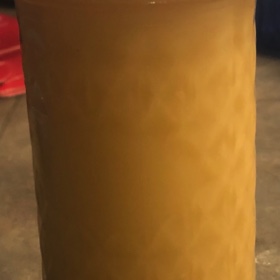Ingredients
1-3 pounds of fatty chunks and fat skimmed from broth
Pan
water
sieve
coffee filters
Heat proof bowl(s)
jar(s)
Description
If you don’t eat a lot of meat or fatty meats, you can collect fat from various sources in a container or bag and stick it in the freezer until you have an amount worth working with further. Unless you are making soap, it doesn't matter if you mix sources.
Directions
Fatty pieces can be trimmed off of raw or cooked meat or both. You will also want skin from poultry and pork as these tend to contain large amounts of fat.
Cut the fat, and skin if you have it, into pieces if it isn't already.
Put in a pan and add water to cover. Cook on low or medium low until all of your pieces are shriveled and there is lots of liquid fat floating around. Add more water as needed.

Run your liquid through a strainer into a container. 
Let cool, then refrigerate over night. 
The next day, scrape off the fat that has collected on the top and discard any liquid.
Put your fat in a pan on low or medium low heat. 
As any water cooks out, and impurities settle, the bubbling will slow down. When it has slowed to almost nothing, and the liquid is yellow or brown (but not burnt), it is done.
Turn off the heat and wait a few minutes for any bits still floating to sink. 
Use a fine mesh strainer lined with a coffee filter to strain into a clean heat proof bowl, leaving any sludge at the bottom in the pan. You will likely need to change your coffee filter a few times. If the fat cools too much, warm it back up to keep it flowing through the filter.
If the strained liquid still has bits floating in it, filter it again. While filtering the fat is not strictly necessary, the cleaner it is, the longer it will last.
Pour the filtered fat into a jar, cool completely, cover and refrigerate. Keep as long as there is no foul odor.

Notes
Recipes that call for fat:
Basic Roux For Gravies And Sauces
Cornbread
Tamales
Refried Beans
Red Enchilada Sauce
Beef Pasties (Pies)
